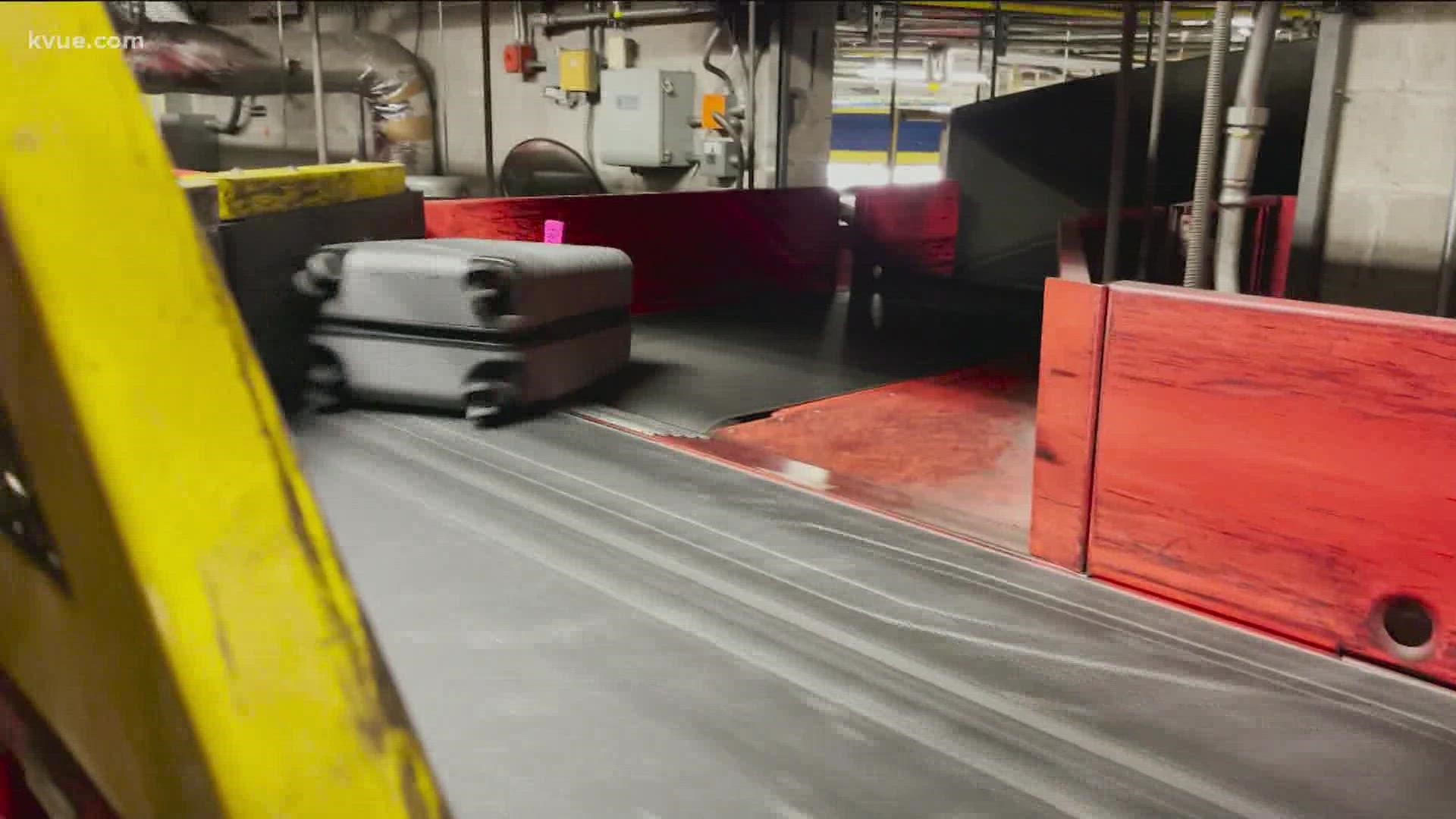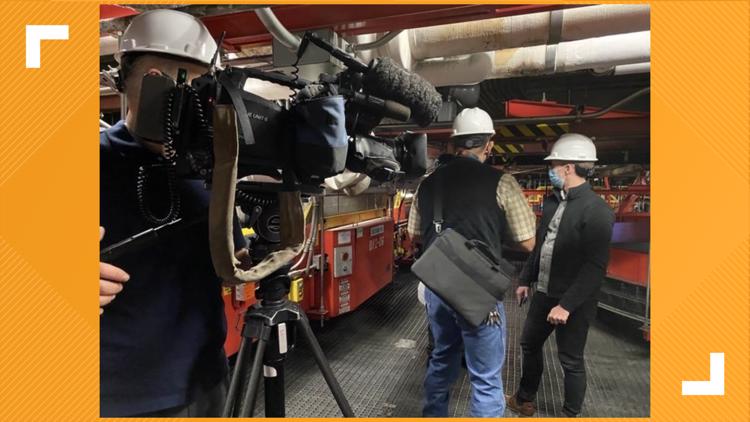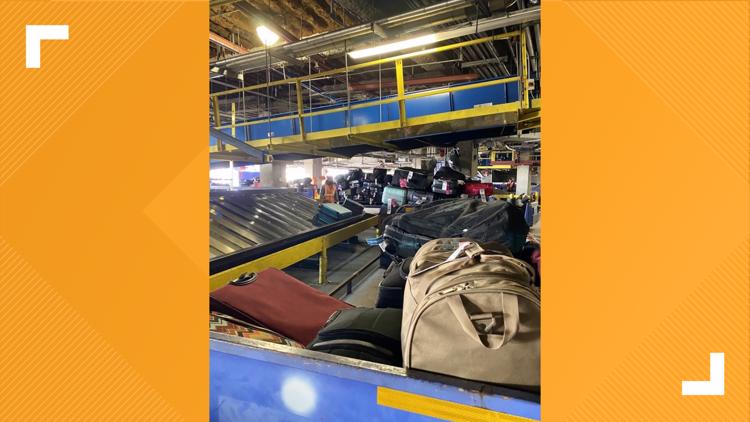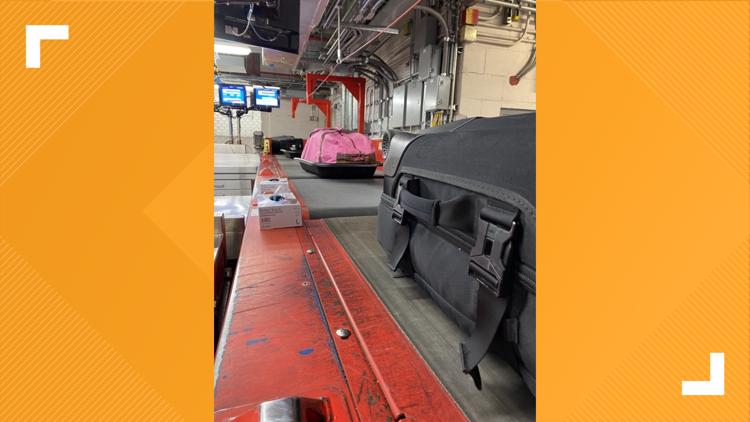AUSTIN, Texas — Austin-Bergstrom International Airport (AUS) had its busiest November ever in 2021. And as the airport keeps getting busier and growing, the need for getting luggage from the check-in counter to the aircraft quickly also increases.
Usually, about 50% of Austin flyers check a bag, according to AUS spokesperson Sam Haynes. During the summer and holiday travel seasons, up to 70% of flyers check luggage.
Airport staff is currently working on designs for an overhaul of the baggage handling system, expected to cost at least $125 million, as part of the airport’s master plan.
“What that means for passengers is that they're really going to be less likely to see delays, where they're on the aircraft waiting to take off because the luggage hasn't quite made it to the flight yet,” Haynes said.
Construction on the new system is set to start later this year, and it won’t fully launch until the end of 2023.
But KVUE wanted to get an up-close look at how the current system works and follow the process from start to finish.
PHOTOS: Inside the Austin airport's baggage handling system
Suitcases travel on nearly two miles of conveyor belts after being checked and before reaching the aircraft.
“It's really about organization, using computers and scanners and people … to keep the luggage moving,” TSA spokesperson Patricia Mancha said.
Tagged luggage is sent under the airport, and initial review is handled by a total of six inline screening devices. Ninety-five percent of the suitcases make it through without a problem.
“Every piece of luggage that is checked here is scanned and photographed so that we can see that there's no bomb parts, no bombs or any type of item that can cause harm once it's on a plane,” Mancha said.
For the 5% of bags that are flagged by the machine, an extra layer of screening is required. A TSA worker hand-checks some of those bags.
“TSA doesn't just go and pick a bag and open it up and go through your belongings,” Mancha said.
After bags are screened, they continue on a conveyor belt and pass through 16 scanners that look for the tag. The barcodes on the tag include certain information, like airline and destination.
The technology then directs the bags on the conveyor belt to the proper location as they drop even lower in the airport, out near the apron where the aircraft park.
Airline workers load the bags onto carts that then deliver them to planes. When bags are clear without any potential security threats, the entire process takes about three minutes.
Mancha warned the TSA is seeing a lot of flyers bringing novelty items that look like grenades – items like perfume bottles, saltshakers or bottle openers. Whether checking a bag or carrying it on, Mancha said those items cause a lot of delays and are not allowed to travel with flyers.
PEOPLE ARE ALSO READING:
- Round Rock ISD students planning walkout over lack of virtual learning amid omicron surge
- Your vaccination status determines whether you should quarantine if exposed to COVID-19
- Austin police seeking suspect accused of brandishing AK-47 at Nyle Maxwell Supercenter
- Nearly half of mail-in voting applications in Travis County have been rejected due to new Texas voting law, clerk says







